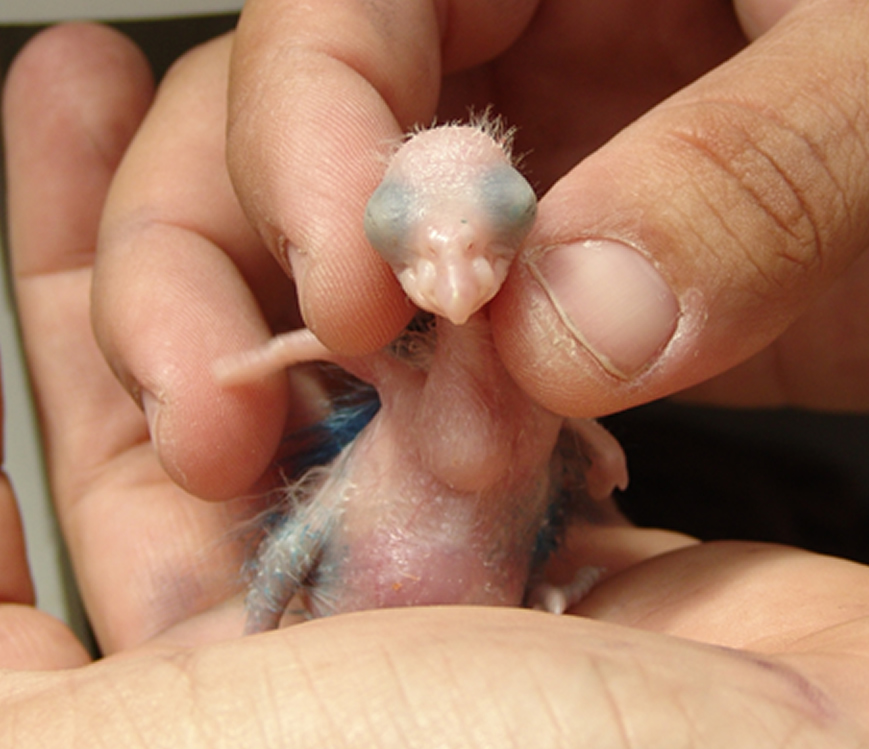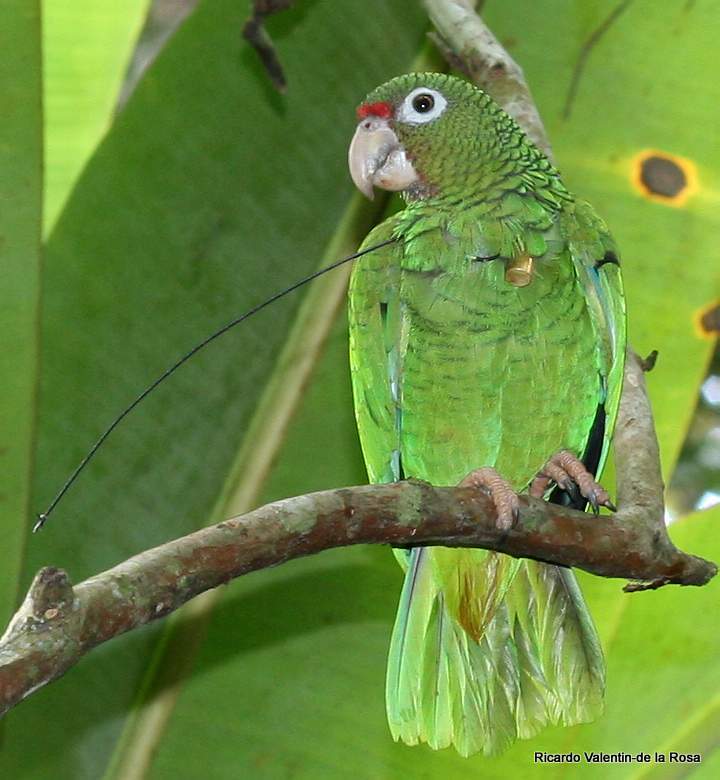The Puerto Rican Parrot (Amazona vittata) and the Inca Incubator
The Puerto Rican Parrot (Amazona vittata) is the only native parrot in Puerto Rico and it is an endangered species since 1967. Therefore, it was very important for the Department of Natural and Environmental Resources (DNER) to preserve existing individuals and their habitat, as well as supervising recovery programs for this species.
Some causes for the reduction in population of the Puerto Rican Parrot are the following:
1. Loss of habitat due to massive deforestation on the island between the 19th and mid- 20th centuries.
2. Catastrophic natural events such as hurricanes that struck the island in the second half of the nineteenth century and the first half of 20th century.
3. Capturing of young ones for the pet market.
4. Illegal hunting.
5. Human disturbance of nursery grounds.
6. Predation, mainly by the red-tailed hawk, pearly-eyed thrasher, mongooses, and rats.
The Puerto Rican Parrot Recovery Program is an effort to conserve, protect and manage the wild and captive populations of this endemic parrot in order to down list the species from endangered to threatened, to establish an additional wild population and insuring that both groups are self-sustaining with an effective population size of 500 birds (5 year average) in each area.
We would like to share with you a letter received on December 20, 2011, from Mr. Ricardo Valentin-de la Rosa, the aviculturist for Vivaldi Aviary of the DNER regarding his work for captive propagation program of the Puerto Rican Parrot.
Mr. Ricardo Valentin-de la Rosa writes to us:
“As an aviculturist I breed this species in captivity to produce birds that will be released to the wild, a few of them are retained in captivity to preserve the genetic
diversity of the species. Breeding this species in captivity is a real challenge.
There are several reasons for the difficulty of breeding this species, some of the most important are; a reduced gene pool, birds with highly idiosyncratic behaviors and the myriad ways in which captivity affect what are essentially wild birds.
One of the most critical aspects of breeding this species is the management of the
eggs. This is one of the most complex aspects of the operation. This is so because
not all eggs are created equal, some are the hope for an increased genetic
representation of an individual that has not previously bred, some are bound for the
field to help increase the wild population and some will be traded between the
aviaries to keep as diverse as possible the genetics of the different flocks. Also not
all birds are good brooders or good parents, which mean their eggs have to be
fostered to other pairs…”
and Mr. Ricardo Valentin-de la Rosa continues:
“A key piece of the egg management is the egg incubator.
The egg incubator can be both a boon and a bane. When they are working smoothly you hardly notice them, when they malfunction it can be disastrous. My experience has included a fair share of both of these experiences. When I started working with the Inca incubator I was pleasantly surprised that some of our most vexing problems simply were not an issue with this incubator.
One problem we had was that all our previous incubators had a lot of pieces inside
the area where the eggs are located. If there was a need to disinfect this area it
involved removing and laboriously cleaning sometimes dozens of rollers, a belt,
trays, bags ect. With the Inca Incubator this can be done very quickly and with
minimal effort due to its simple interior structure.
Because the Inca Incubator runs on the same 120 volt range that local utilities use,
there is no need for a set up for a different voltage need. This is no small issue;
the aviary is located in a remote spot, in the middle of a tropical forest, in a place
with a high frequency of thunderstorms. In any given day voltage can fluctuate
wildly due to tree branches making contact with the wires, thunder hitting the wires
or wind damage to the system. All these fluctuations are hard on electrical
appliances, even well protected ones which in theory should be safe from these
things. Unfortunately at times the electrical fluctuations can defeat even the most
elaborate defenses and this is the reason most of our incubators have left us for the
great incubator room in the sky. The Inca Incubator which is connected to a
battery/surge protector with no intervening apparatus has survived everything the
weather has thrown at us..”.
“But the area where the Inca Incubator really shines is in humidity control.
In most locations the problem for bird breeders is low humidity. But this is not true in the Vivaldi Aviary which is located in the Rio Abajo forest. Here humidity in any given day, even in the height of the dry season, can fluctuate wildly from 40% to 100% in the course of hours or sometimes in minutes! Of course the incubator is set up in an air conditioned room that’s kept at 70° F and the air conditioning helps keeps the humidity relatively low. But all these measures can, and have failed as a result of the many momentary (and sometimes no so momentary) power outages that occur at random during the breeding season. Because in the Inca Incubator the humidity source is not coupled with the heating element, the humidity source can be removed from the incubator if needed. This means that humidity stays in the optimal 45% range even if the air conditioner barely pushes it into the 50-55% range.
This is important because it means I don’t have to put a dehumifier in the room to keep the humidity in the 45% optimal range for incubation of this species, this is one less piece of machinery to worry about!
Last but not least is that the Inca Incubator is surprisingly affordable when
compared with some other incubator models. This is significant when one has to
run an operation on a budget that demands that you keep a sharp eye on every
penny. I could buy several Inca Incubators with what I have spent in a single one
of the others.
To put my experience in a few simple words, I can asset that the Inca Incubator is
affordable, easy to operate, reliable and satisfies many of our particular needs”.
D.M.P. Engineering wishes to thank Jafet Vélez-Valentín,




